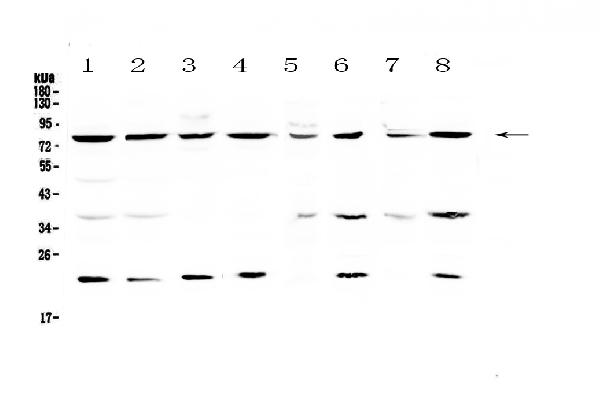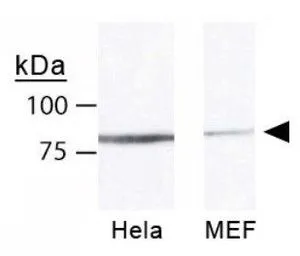Mre11 antibody [HL1385]
GTX636825
ApplicationsWestern Blot, ImmunoHistoChemistry, ImmunoHistoChemistry Paraffin
Product group Antibodies
TargetMRE11
Overview
- SupplierGeneTex
- Product NameMre11 antibody [HL1385]
- Delivery Days Customer9
- Application Supplier NoteWB: 1:500-1:3000. *Optimal dilutions/concentrations should be determined by the researcher.Not tested in other applications.
- ApplicationsWestern Blot, ImmunoHistoChemistry, ImmunoHistoChemistry Paraffin
- CertificationResearch Use Only
- ClonalityMonoclonal
- Clone IDHL1385
- Concentration1 mg/ml
- ConjugateUnconjugated
- Gene ID4361
- Target nameMRE11
- Target descriptionMRE11 double strand break repair nuclease
- Target synonymsATLD, HNGS1, MRE11A, MRE11B, double-strand break repair protein MRE11, AT-like disease, DNA recombination and repair protein, MRE11 double strand break repair nuclease A, MRE11 homolog 1, MRE11 homolog A, double strand break repair nuclease, MRE11 homolog, double strand break repair nuclease A, MRE11 meiotic recombination 11 homolog A, MRE11 meiotic recombination 11-like protein A, double-strand break repair protein MRE11A, endo/exonuclease Mre11, meiotic recombination 11 homolog 1, meiotic recombination 11 homolog A
- HostRabbit
- IsotypeIgG
- Protein IDP49959
- Protein NameDouble-strand break repair protein MRE11
- Scientific DescriptionThis gene encodes a nuclear protein involved in homologous recombination, telomere length maintenance, and DNA double-strand break repair. By itself, the protein has 3 to 5 exonuclease activity and endonuclease activity. The protein forms a complex with the RAD50 homolog; this complex is required for nonhomologous joining of DNA ends and possesses increased single-stranded DNA endonuclease and 3 to 5 exonuclease activities. In conjunction with a DNA ligase, this protein promotes the joining of noncomplementary ends in vitro using short homologies near the ends of the DNA fragments. This gene has a pseudogene on chromosome 3. Alternative splicing of this gene results in two transcript variants encoding different isoforms. [provided by RefSeq, Jul 2008]
- Storage Instruction-20°C or -80°C,2°C to 8°C
- UNSPSC12352203





